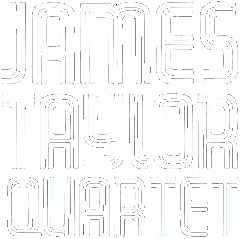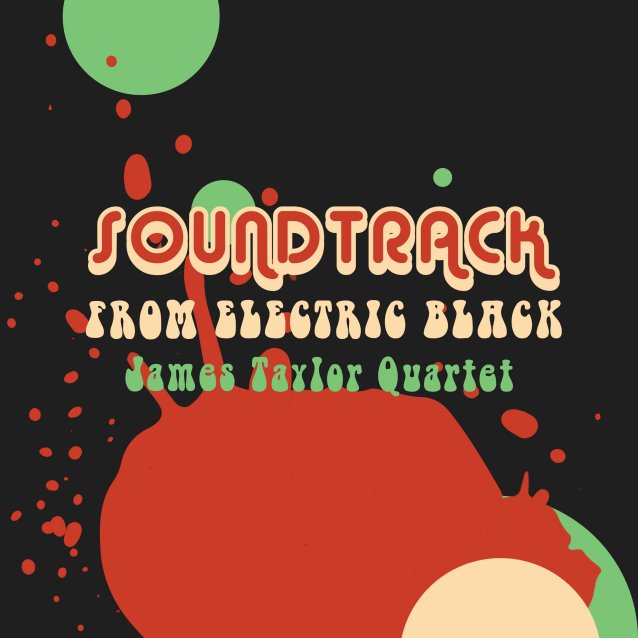The James Taylor Quartet to Premiere New Album ‘Soundtrack from Electric Black’ with Orchestral Show at Cadogan Hall
As part of the EFG London Jazz Festival, the James Taylor Quartet will be backed by a full orchestra when they play Cadogan Hall on November 21st for the premiere performance of their new album ‘Soundtrack from Electric Black’.
This very special live show precedes the release on November 30th of ‘Soundtrack from Electric Black’ from Audio Network.
For the past 30 years, the James Taylor Quartet has set the standard for the coolest sounds in funky acid jazz. On dozens of mighty albums and at their legendary gigs at home and around the world, they’ve quietly become a byword for distinguished British creativity.
‘Soundtrack from Electric Black’ is, however, the culmination of over thirty years of holding onto a musical vision that has developed within Taylor since he was a small child growing up in 1970s Britain.
This vision began to find expression with the JTQ’s debut album ‘Mission Impossible’ and, since then, relentlessly gigging, recording, listening, studying and composing tunes with a view to raising the bar in the UK music scene.
Taking his inspiration from the truly great film composers such as Bernard Herrmann, Lalo Schifrin, Henry Mancini, Quincy Jones and John Barry, Taylor wanted to make exciting, cinematic orchestral music that, as he puts it, “grooves like a mother fucker” in a way that retains an identifiable UK vibe; punky, angry and hip.
Taylor had always lamented never being able to convince a record label to fully commit to making the record he wanted to make – or, more accurately, needed to make: “Labels would usually go halfway, give me some budget for a big horn section or a decent studio. But I guess, ultimately, they didn’t share my vision, so the record never got made – until now.”
Realising it takes a substantial musical education to create orchestral music, Taylor applied to study composition and orchestration at various music colleges but was rejected. As a result, to familiarise himself with how musical scores look and work, he joined a local church choir.
Taylor eventually gained the confidence to compose and score out his own Mass using a four part choir, which led to composing for string quartets and, finally, full orchestral scores.
Through his experience in making production music albums for various major labels, Taylor began to notice Audio Network – a global music company working in partnership with known and emerging artists to market and release their music across digital service providers as well as providing an opportunity in music for video. Audio Network gives artists the freedom to create the music they love, and then provides exposure to a large global customer base all backed by significant investment and support from a skilled music and production team.
“Audio Network are one of the biggest bookers of recording studios, orchestras and live musicians in the country, so I set about persuading them to let me record this album with a full orchestra at Abbey Road Studios inside Studio Two, The Beatles Studio,” explains Taylor. “This was a big ask and Audio Network have been incredibly supportive.”
‘Soundtrack from Electric Black’ was originally intended for production use only, but the vibe in the studio was ecstatic. Taylor says, “At the end of the session the orchestra applauded the compositions, which took Audio Network by surprise – me too! One of Abbey Road’s engineers said it was the best thing he’d recorded there in 20 years.”
With that kind of enthusiasm, Audio Network decided to put ‘Soundtrack from Electric Black’ forward for a full commercial release.
Such a decision increases Taylor’s senses that the commercial music business as he knows it is becoming more aligned with music for video. He said, “Audio Network are pulling the cream of the British jazz scene together – Tim Garland and Jason Rebello, for example – and getting them to write and record together in a kind of family way like how classic old labels such as Motown and Stax used to. It feels very fresh and exciting.”
Taylor says the last time saw so many big names under the same roof was at the start of the Acid Jazz boom in 1989, when Polydor Records started signing all the main players. “It feels like the real creative powerbase in the British music scene has relocated, and there is a healthy vibrant energy rising Phoenix-like from the ashes of the old music biz – and from the production music, of all places.”
It’s this shift which has finally allowed Taylor to compose, orchestrate, record and release commercially ‘Soundtrack from Electric Black’, which, Taylor says “wouldn’t get past the front door of the average major label, which is good news for British music.”
‘Soundtrack from Electric Black’ – a track-by-track guide, by James Taylor.
Electric Black: this tune is dark and sinister and evokes images along the lines of ‘Dirty Harry’, ‘Bullitt’ and ‘The French Connection’, or soundtracks such as Kojak and Ironside. The music to these films and cop shows was very important to me as a kid growing up in boring suburbia because it was a connection to some world out there that was massively exciting and glamorous. For me, these writers were the true ‘Mozarts’ of their day
The music is hard and tough like the images but very sophisticated, merging complex classical and jazz themes, with odd time signatures and beautiful sometimes angular modulations and key changes. At the same time, there’s a tense powerful British funk groove under it. This juxtaposition puts me in mind of Bernard Herrmann’s ‘Taxi Driver’ score; slightly insane and demonic with moments of high excitement and bleak, terrifying inevitability building to a climax before dropping down again into tense uncomfortable regularity.”
Making Tracks: This is the other end of the spectrum; sunny, glamorous, millionaires’ playground music, aspects of James Bond and French Riviera/Italian Job-style glamour! With a Brazilian Rio-style Airto groove it has a tough bottom end and rhythm, and a silky top part of strings, harp and doubled flutes, with a touch of Monaco Grand Prix thrown in for good measure
Black Belting: This is the classic JTQ sound and groove but orchestrated the hell up! Drawing from the ‘Shaft in Africa’ soundtrack for inspiration, it’s a club dance track that is essentially film music. JTQ staple fayre, but so much more!
Sunshine in her Smile: this has a Bossa feel and is more subtle. Like from the amorous Peter Sellers in ‘The Party’ by Mancini, it sounds expensive sweet and innocent; pizzicato strings playful and sunny flutes doubling with vibraphone to create an escapist fantasy. This is where orchestration and small gigging club bands can be mutually complimentary; the stings and flutes decorate and add subtlety to an essentially intimate small setting.
Heidi’s Revenge: British Brian Auger-style funky R&B, heavy Hammond and sax, backed by slow moving strings. This puts me in mind of the Blood, Sweat and Tears’ ‘Spinning Wheel’ vibe, but much more British. A quirky, simple melody that sticks in the ears, it evokes party sequences from ‘60’s American films like ‘Coogan’s Bluff’ or ‘Banana Splits’.
The Frug : JTQ saluting Jimmy Smith, the true Hammond king. His Verve recordings were orchestrated by Oliver Nelson to maximum effect – listen to something like ‘Stay Loose’ by J Smith to see this as the UK’s answer to America’s finest. Again, classic JTQ-style, but never before like this, with massive sweeping strings and an earth shattering eight-piece horn section stabbing around.
Sweet Revival: Static, imperceptible movement, lush, blissed-out, a brief glorious moment of connection caught for all eternity – it’s the classic love scene score.
Back Home Style: British R&B, but underscored by sweeping strings with a Cropper-style picking guitar part. It has a very black and white TV feel to it – ‘Play for Today’ meets Dave Allen.
James Taylor will be available for interview.
For more information please contact Dave Clarke:
07966 557774 / dave@planetearthpublicity.com / @PlanetEarthDC

